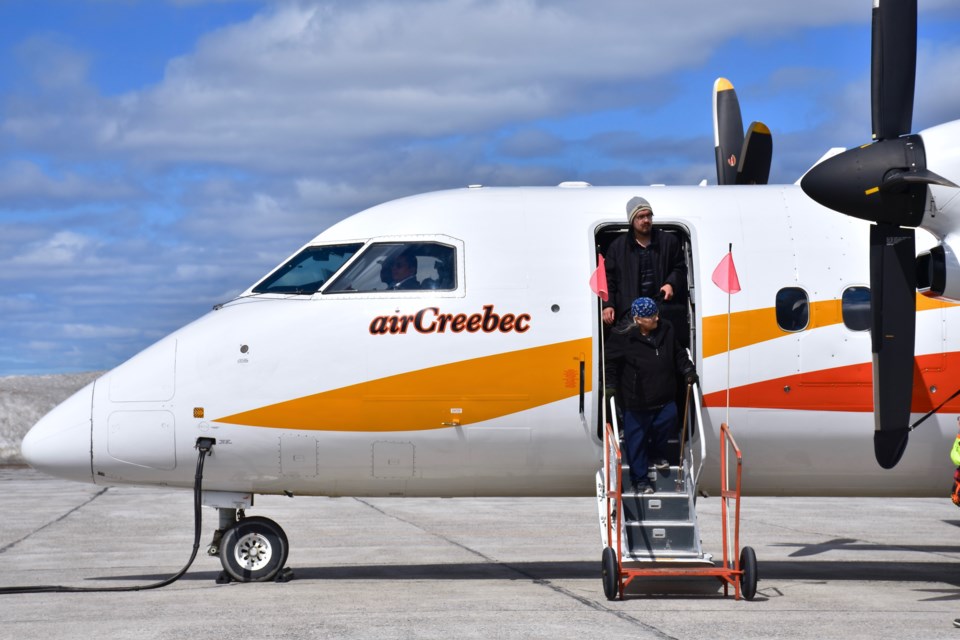Timmins is housing more than double the number of evacuees from Kashechewan than it did last year.
After a state of emergency was declared in the community, the first flight of people fleeing from rising water on the Albany River arrived in the city April 15.
As of Friday, Timmins CAO Dave Landers said 847 evacuees were being housed at three locations in the city.
When planning for the evacuation, the city committed to increase how many people it could accommodate to 700 from the 400 that were housed in 2018.
“Over time we saw that there was a bit of an additional demand. In the past, the community has been able to keep more people in, but at this point there’s a full evacuation,” Landers explained.
He said the city couldn't run an evacuation of this size on its own.
“There really is a strong team that’s come together to support the evacuation and the response from the evacuated community and the leadership of Kashechewan has been real positive in terms of what Timmins has been able to deliver,” said Landers.
“We’re happy to do it, it’s the right thing to do for a city like Timmins is to step up and support neighbours in need and we’re glad that we’re delivering on it in a way that we’d hoped to."
There are a lot of moving pieces to welcoming hundreds of people into the city.
To allow for the additional numbers, another hotel was brought on board.
People are staying at the Ramada Inn and Senator, which were part of the original plan, and the Travelodge.
About 300 people are calling the Ramada in the west end of town home for the duration of the evacuation.
“We made a decision to just close the hotel. We want to make sure that it’s for our guests and that they feel at home here, it’s like they’re second home,” said Don Padley, Ramada Inn general manager.
So far, this has been a successful evacuation.
“There’s a lot of smiling faces and happy faces, people laughing. They play cards in the lobby at night time...it’s kind of a fun atmosphere,” he said.
Until the community is relocated, he said they “welcome Kashechewan with open arms.”
Gervais Emergency Consulting is the point of contact for the hotels and other community partners, and arranges activities and schooling.
Project lead Scott Atkinson said they’re building on what they learned from last year’s evacuation.
“This year we have a lot more evacuees in town...and it’s just learning as you go, it’s a lot of work. A lot of preparation, but a lot of work,” he said.
To keep the families busy, a recreation liaison from the community was hired this year.
“He’s been actually fantastic and he’s been helping us out with organizing,” Atkinson said.
There have been outings to the movies, laser tag, and bowling. A child-safe area has also been set up for parents to bring their kids to play.
“Also the Timmins Native Friendship Centre has been a big part of a lot of activities, with beading and dream catcher-making, and bannock and cooking,” he said.
Last week, the students had their first day of school.
Atkinson said they secured space at Northern College, and buses have been arranged. He explained the students were given homework packages before they left, and some of their teachers are here as well.
When evacuees arrive in town, the Red Cross is their first point of contact.
Red Cross field operation lead Dave Schiller said in town they help with family needs such as personal supplies like diapers or toothbrushes. They also help with accommodation and food.
“We’re motoring along trying to meet the needs of all of the vulnerable people who were taken out of their homes unhappily to be safe,” he said.
On a city level, Landers said the mayor has been talking regularly with the Kashechewan leadership.
There are daily briefings with partners such as the police, fire, EMS, Porcupine Health Unit and more.
"There’s close ties with the local supports through the Timmins Native Friendship Centre, and working with the Red Cross is critical in terms of ensuring that things are done right,” he said.
There are also the private sector partners.
He said the hotels, have stepped up and are “offering real high level of service to people who are in a tough spot, dislocated from their home community and separated from friends and family.”
It's not known how long the evacuation will last.
While the ice break up has already happened, Roger Lord, an Emergency Management field officer for the Albany sector, said last week they were waiting for an ice jam to move.
"There’s not enough water to push that ice away, so right now that ice jam’s staying there, it’s not moving anywhere. So, it all depends on Mother Nature now. If the water goes up a bit and move those ice chunks, yes they might return earlier, but they have to wait for the ice jam to be gone from there before they can send back people,” he said.
